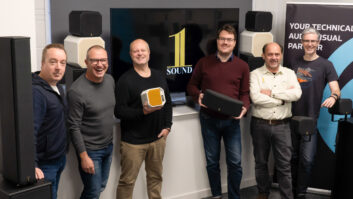As the global pandemic hit, it caused a huge surge in the demand for electronics as people moved towards remote working and learning. To put that into context, the Semiconductor Industry Association (SIA) recently announced that the global semiconductor industry sales reached $49.7 billion for November 2021 alone. That is a staggering increase of 23.5% on the previous year, and as a result the industry attained its highest-ever annual total figures.
 This demand however coincided with a string of other bad-events including trade-wars, rising material costs, factory fires and severe weather conditions, resulting in a detrimental snowballing effect for chip manufacturers in a way that could have never been predicted.
This demand however coincided with a string of other bad-events including trade-wars, rising material costs, factory fires and severe weather conditions, resulting in a detrimental snowballing effect for chip manufacturers in a way that could have never been predicted.
As a chip manufacturer, I have encountered a few of these challenges first-hand and had to quickly address the way we design and manufacture. Existing strategies were no longer relevant and our teams have had to devise a new direction to help us rapidly overcome the semiconductor supply chain issue in order to keep up with market demand, while maintaining chip performance and lowering costs.
For the future of the LED market and LED display innovation, our driver chips are essential. We have designed proprietary technologies to improve the fundamental qualities of LED display technology which embed at driver chip level for better results in impedance, heat dissipation, brightness uniformity and colour reproduction.
LEDs have two natural characteristics that make these displays far superior than any other display technology, one being high energy efficiency and the second is fast response time. However, as the pixel pitch tightens, a big part of that process is making sure that LED components stay within their safe operating limits in terms of current and heat.
Achieving higher resolutions is the by-product of tighter pitches, but without control over the heat the visual performance is negatively impacted. The more power required in the system, the greater the heat generated which means that the LED diodes will operate at a higher temperature, shortening their lifespan. If one product operates at 1.5 times the power of another, (for a given brightness), the higher power product will see image degradation due to a faster ageing process. These effects will manifest in poor uniformity, reduced brightness and reduced colour saturation.
This is why our driver chips have become so critical to the future of LED innovation. Our research and development team has spent years mastering the manufacturing process of our driver chipSilicons. Creating a process unique to SiliconCore which encompasses our technology patents into the chips themselves, has allowed us to have complete control of the current, heat and impedance of the display from the inside out for optimal performance.
However, the reality of the global pandemic and the events that followed, had the potential to put our manufacturing processes at jeopardy. Being at the source of our own driver chips, provided us with the opportunity to quickly adapt and evolve our processes without compromising on the quality of our displays. LED technology has become so much more accessible to the market and a main concern for our team was that the increasing material costs would price the display out of the market, so it was imperative to factor costs into the design.
The by-product of the research and development was a completely new driver chip which provides better performance and less wafer demand. The SCL8081A6 driver chip has faster clock speeds than its predecessor, enabling it to operate more pixels per driver chip with less pin counts.
This phenomenal breakthrough, means less wafers are required to drive the same number of pixels as before, therefore a significant reduction in the demand toward wafer foundry. This will mean we’re able to use our facilities more efficiently and produce the driver chips at a faster rate.
We also shifted away from using ball grid array (BGA) surface-mount packaging, opting for a new Quad Flat No-lead (QFN) package. Why did we do this? Truthfully, BGA substrate availability is another bottle neck in the supply chain and it can be in tighter capacity than wafer. By moving to the QFN package, which is cheaper and much more widely available, the package cost reduction can partially offset the rising wafer price, putting much less stress on the total bill against the overall material cost.
This new chip is a breakthrough for LED displays, producing a fully immersive picture quality for simulation and highly detailed image applications. The electronic design team has integrated all of SiliconCore’s advanced technologies into the SCL8081A6 driver chip design in order to preserve the natural characteristics of LED, resulting in even better energy efficiency, rapid response time and color reproduction, whilst competing against the constraints of a global shortage.
When faced with challenges, the only way we could respond was to assess and push forward with innovation.
Check out part one of our special report into semiconductor shortages here.







